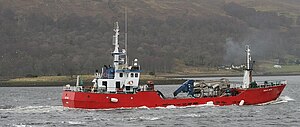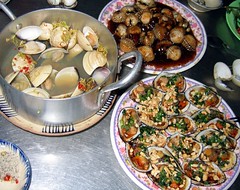This interview appeared in the November December 2012 edition of International Aquafeed magazine
How does AwF define responsible and sustainable aquaculture?
Responsible and sustainable aquaculture is using appropriate technology for the given situation so that it enhances fish production without negative effects or impacts on the resources used. Because AwF teaches basic aquaculture principles for very challenging situations, we encourage using the KIS principle – Keep it Simple.How does AwF operate on a practical level?
To date, AwF has been a project sponsor, directing donations received to supporting projects reviewed and approved by our Technical Advisory Group. We normally provide project funding in the range of US$ 10,000-15,000 for multi-year projects. We collaborate with other NGOs to leverage their resources when possible. For example, we collaborated with the Marine Biological Lab in Woods Hole, MA to help develop an Aquaculture Learning Center (ALC) in Marigot, Haiti. Novus International provided significant help with this project via AwF.What do you consider AwF’s greatest achievements or successes?
AwF’s greatest achievement to date has been its ability to survive. What I mean by this is that we have been able to keep going in the face of funding challenges resulting from the global economic meltdown beginning in 2008. Donations have dropped off significantly while project submissions have increased. This has forced us to look at how we operate and try to come up with a better solution.If anyone was to look at our list of current and completed projects on our website they would find that we have managed to do a lot with very little. Imagine what we could do if we could attract significantly more funding.
What are the biggest challenges aquaculture faces?
In the developed world, it is definitely public education and acceptance as a significant component of the food production industry. The lack of knowledge about aquaculture by the general public is contributing to a dysfunctional regulatory environment in many developed countries. Government regulatory agencies appear to be challenged when it comes to leading or enabling the development of the industry. There are many groups with perspectives and interests that are opposed to the rational growth and development of aquaculture.In the developing world, it is transferring knowledge and appropriate technology to people so that they can apply it to feeding themselves and their families and communities. Governments of developing world countries do not have the resources to do this directly, but by collaborating with organisations such as AwF, it may be possible to enable the responsible and sustainable development of aquaculture.
How is AwF responding to these challenges?
AwF has been going through a re-think of how we operate. The original vision of Michael New was to use volunteers to train the world’s poor and disadvantaged but in recent years we have gone off course in that we have become a funding organisation rather than a working organisation putting our volunteers directly into the field.AwF has over 300 volunteers representing a wide range and depth of aquaculture expertise, knowledge and wisdom. To date, we have not been able to utilise this tremendous fund of intellectual capital in any significant manner.
I think we have found a solution – Aquaculture Learning Centers (ALCs). These will be demonstration farms where appropriate aquaculture technologies will be displayed. Courses will be given by our volunteers who will also mentor the local staff. ALCs will sell fish to graduates and provide ongoing tech support and knowledge transfer. The objective is to get the ALCs to become financially self-supporting and run by the local people whose welfare is most improved by the success of the enterprise.
From my observations and discussions with people who work in international development I have learned that when the funding stops the projects die; there is no incentive to continue because the people have not taken ownership of the project. The ALC model is meant to change that. Right from the get go, the people that will benefit from our help will be directly involved in constructing and staffing the ALCs. It will function as a business and we will train them in business skills as well as aquaculture skills. The end goal is to have the ALCs become financially self-sustaining within two to three years.
In the larger picture, we see linking the ALCs via modern technologies so that they can share experiences, lessons learned, and best practices so that they leverage the knowledge they have collectively to do more. Given the advances in mobile wireless communication in developing countries, the ALCs will become hubs for knowledge and technology transfer to surrounding communities. Think of them as broadcasting centres that can also be used by other NGOs to educate people about all sorts of topics from nutrition and food preparation using solar or biogas stoves to water filtration and public hygiene. The possibilities are endless.








































